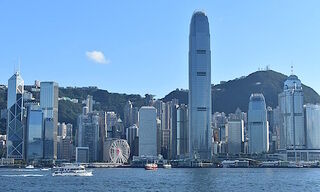Banking is Still About Branches and ATMs
A McKinsey Report reveals that retail banking makes up almost half of all financial sector profit worldwide. finews.asia takes a closer look.
All that talk about structured products, discretionary investment mandates, M&A - even crypto - may have confused everyone about what banking is. Even now, according to McKinsey & Company, the humble local bank branch - and the ubiquitous convenience store ATM - reign supreme.
At least that is what an October report on the future of retail banking by the consultancy’s financial services practice unequivocally states. In it, they claim retail banking makes up 48 percent or almost half of the global banking pool of profit, which they estimate at $680 billion.
They believe the segment, by itself, is larger than entire industries, among them pharmaceuticals, telecommunications, and food manufacturing. In other words, those branches and ATMs count for more than an army of Nestles, Vodafones, Novartises, and Roches.
Stable Returns
Retail also appears to have avoided much of the convulsions, restructuring, and redundancies seen in many other parts of banking, with the 10-year average annual return on equity being a veritable beacon of relative stability at 8.9 percent. Indeed, it has even trended noticeably higher this year as the industry continues to recover from the pandemic. But, beyond that, there are some divergent trends as the picture gets more granular.
The McKinsey report looked at revenue by product per individual client and came up with some surprising idiosyncrasies. In the US and Western Europe, retail banks tend to lose money with basic products such as credit cards and unsecured loans while they barely break even with them in China and Emerging Asia. In Latin America or the Middle East and North Africa, the latter being treated as one region, it manages to eke out significant profits.
When it comes to more complex lending products such as mortgages and car loans, all regions are profitable except for the Middle East and Africa, which barely breaks even. All regions make money when it comes to providing top-tier retail services for wealth accumulation, insurance, and pensions even though, somewhat surprisingly, the least profitable part of the world for such products is in China.
Digitalized Asia
The emerging markets of Asia and China are also unique in that they are the first in the world where so-called digital-first models have reached maturity.
It has allowed them to shrink an «already thin» branch network by a third over five years and is a key reason why they have been able to keep basic products on the threshold of profitability.
«However, profit pools for complex lending and wealth and protection services are low by global standards, and challenges to incumbent banks remain as innovative Big Tech and fintech organizations continue growing in terms of consumer adoption and product diversification,» McKinsey wrote.
Big Tech
But such a wide-ranging report would not be replete without repeated suggestions of some impending, imminent threat about to strike the industry down, instilling fear into the hearts and minds of industry employees and executives, likely prompting the latter to find succor by summoning reams of available, well-prepared consultants.
That fear appears to be big tech. According to McKinsey, digitalization has not only lowered the general barriers to entry but the IT budgets of the largest retail banks pale in comparison to that of big tech.
They, and the fintech sector, already capture about 45 percent of the gross revenues in payments while digital investment apps manage a quarter of assets in the mass-affluent segment and are growing at twice the rate of traditional providers.
Critical Advantage
But banks do have some trump cards left. According to McKinsey, when it comes to customer engagement, just over half, or 52 percent, of clients engage with their bank every week. On Amazon, however, only 22 percent of them buy that often.
But they still haven’t learned how to use the information on clients that they already have.
«They should act fast while the window of opportunity is still open. The stakes could not be higher,» the report stated.























